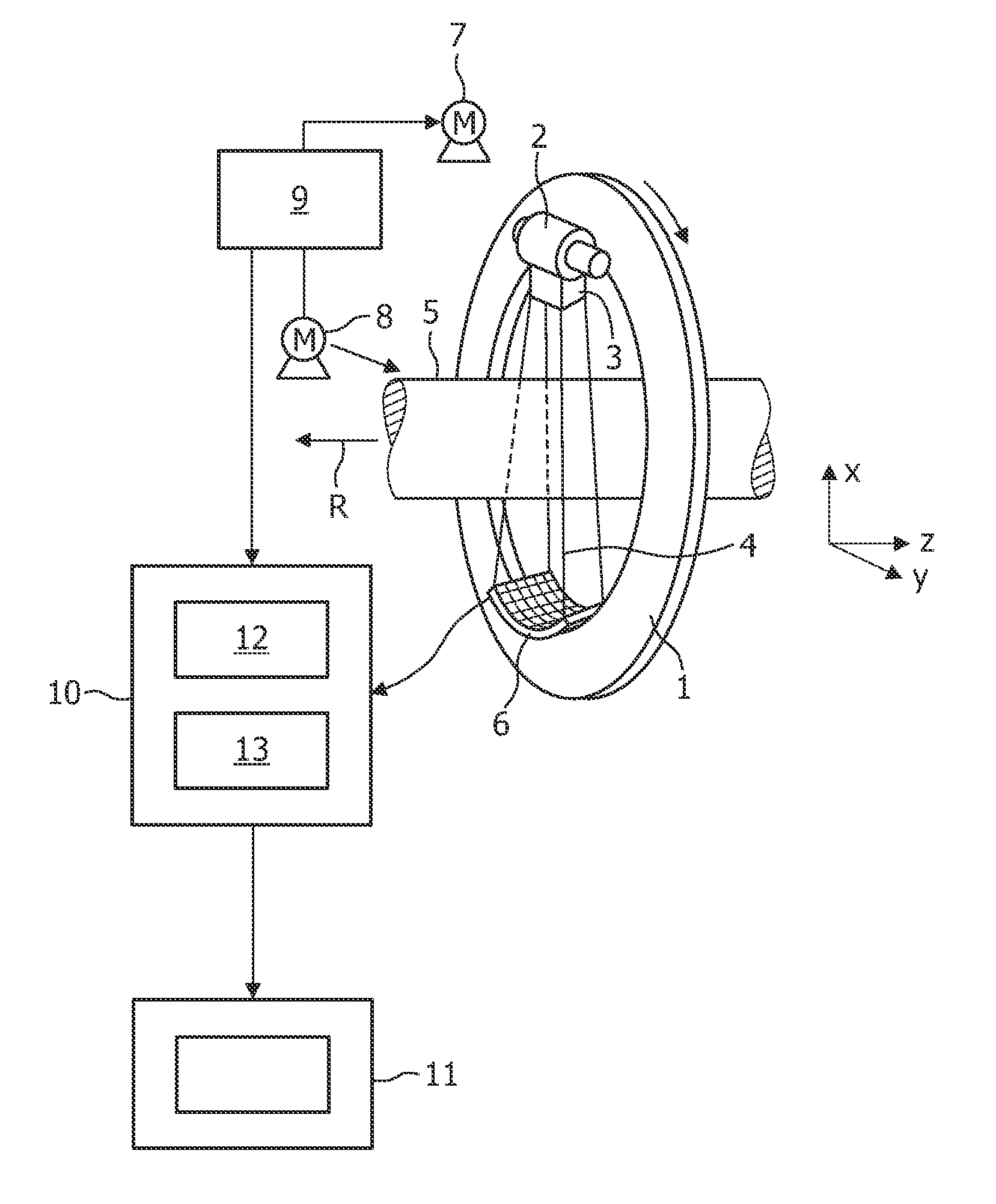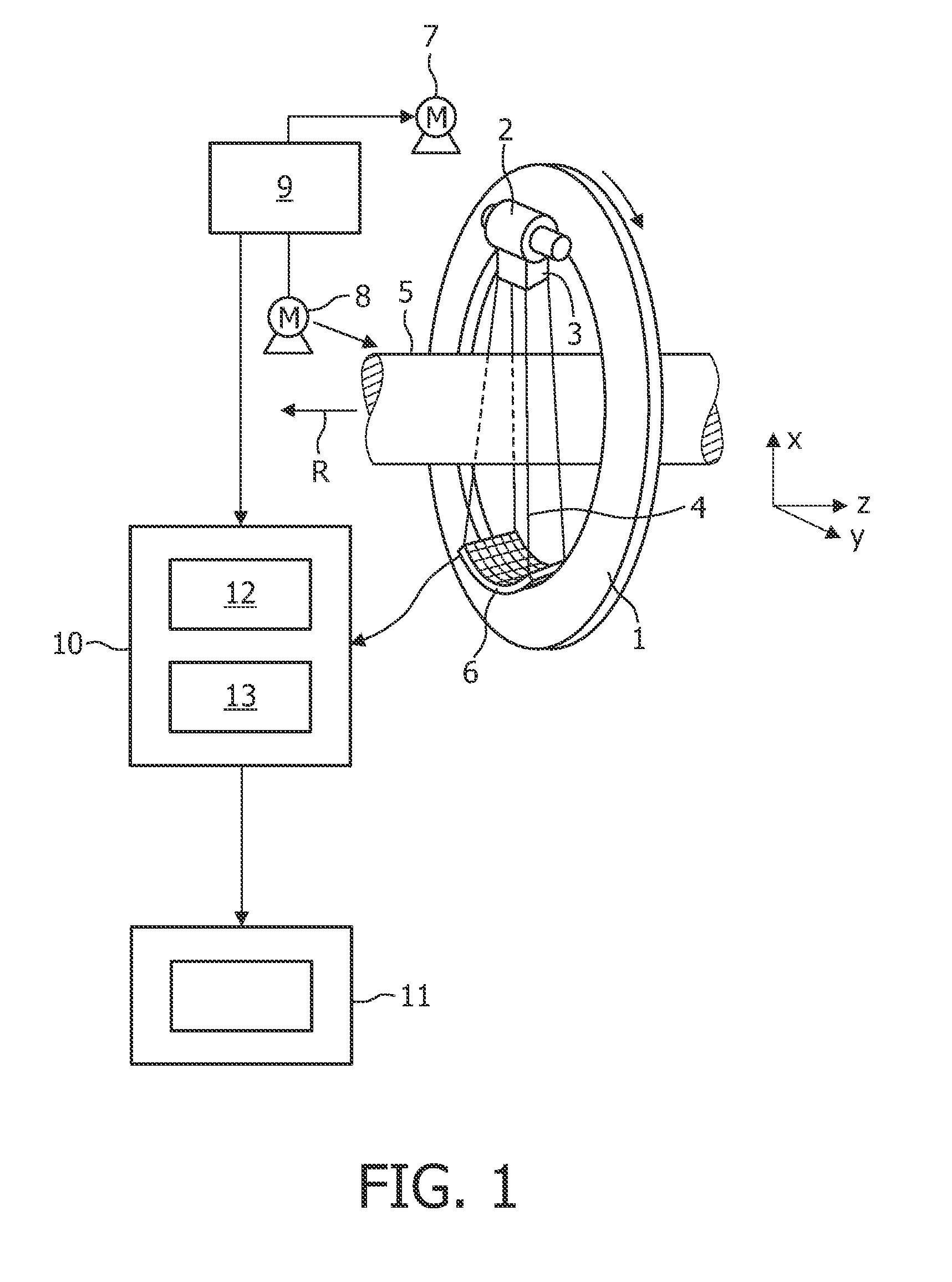Imaging system for imaging a region of interest from energy-dependent projection data
a projection data and imaging system technology, applied in the direction of instruments, material analysis using wave/particle radiation, nuclear engineering, etc., can solve the problems of time-consuming segmentation of initial images, inaccurate segmentation of computed tomography images, etc., to maximize the likelihood of the first projection data given the attenuation component images, and the deviation of the second projection data
- Summary
- Abstract
- Description
- Claims
- Application Information
AI Technical Summary
Benefits of technology
Problems solved by technology
Method used
Image
Examples
Embodiment Construction
[0025]The imaging system for imaging a region of interest from energy-dependent projection data shown in FIG. 1 is, in this embodiment, a computed tomography system. The computed tomography system includes a gantry 1 which is capable of rotating around an axis of rotation R, which extends parallel to the z-direction. A radiation source 2, for example an X-ray tube, is mounted on the gantry 1. In this embodiment, the radiation source 2 emits polychromatic radiation. The radiation source 2 is provided with a collimator device 3 which forms a conical radiation beam 4 from the radiation emitted by the radiation source 2. In other embodiments, the collimator device 3 can be adapted for forming a radiation beam having another shape, for example, having a fan shape.
[0026]The radiation traverses an object (not shown), such as a patient or a technical object, in a region of interest in a cylindrical examination zone 5. After having traversed the region of interest, the radiation beam 4 is in...
PUM
| Property | Measurement | Unit |
|---|---|---|
| energy | aaaaa | aaaaa |
| energy- | aaaaa | aaaaa |
| computed tomography | aaaaa | aaaaa |
Abstract
Description
Claims
Application Information
 Login to View More
Login to View More - R&D
- Intellectual Property
- Life Sciences
- Materials
- Tech Scout
- Unparalleled Data Quality
- Higher Quality Content
- 60% Fewer Hallucinations
Browse by: Latest US Patents, China's latest patents, Technical Efficacy Thesaurus, Application Domain, Technology Topic, Popular Technical Reports.
© 2025 PatSnap. All rights reserved.Legal|Privacy policy|Modern Slavery Act Transparency Statement|Sitemap|About US| Contact US: help@patsnap.com



